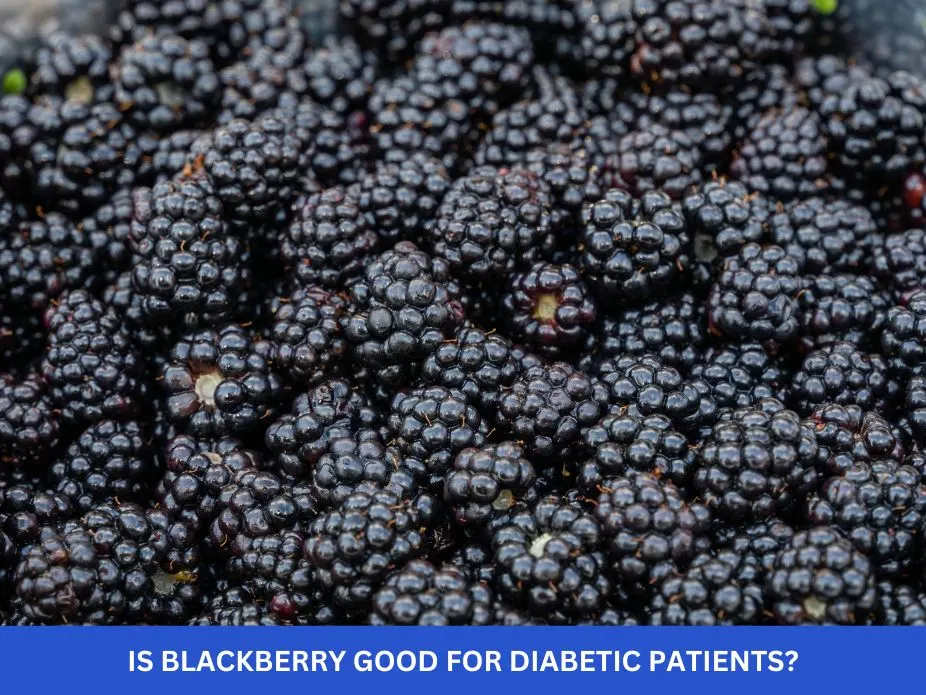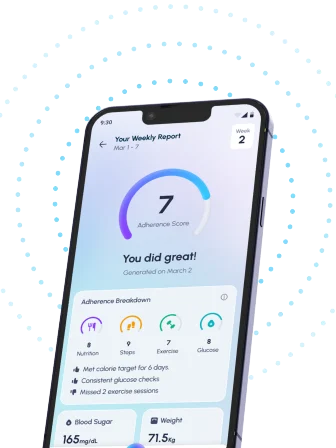Table of Contents
- Hyponatremia in Older Adults: Recognizing the Symptoms
- Diabetes and Low Sodium: Understanding the Link in Seniors
- Managing Hyponatremia: A Guide for Seniors with Diabetes
- Low Sodium Levels in Seniors: Prevention Strategies and Treatments
- Is Your Senior at Risk? Recognizing Hyponatremia and Diabetes
- Frequently Asked Questions
- References
Have you noticed your elderly parents or grandparents experiencing unusual fatigue or confusion lately? These could be subtle signs of a serious condition, especially if they also have diabetes. This blog post tackles Hyponatremia in Seniors: Understanding Low Sodium & Diabetes Risk, explaining what hyponatremia is, why seniors, particularly those with diabetes, are more vulnerable, and what steps you can take to protect your loved ones. We’ll explore the symptoms, causes, and crucial preventative measures to help ensure their well-being. Let’s delve into this important health concern and learn how to better support our aging population.
Hyponatremia in Older Adults: Recognizing the Symptoms
Understanding the Silent Threat
Hyponatremia, or low sodium levels in the blood, is a serious condition that often goes unnoticed in older adults, particularly those living in hot and humid climates prevalent across many Indian and tropical countries. The symptoms can be subtle and easily dismissed, making early detection crucial. This is especially important for seniors with diabetes, where the risk is significantly amplified. Over 30% of diabetic patients exhibit HbA1c levels above 9%, highlighting the vulnerability of this population. These elevated HbA1c levels are often associated with increased risk of hyponatremia.
Recognizing the Warning Signs
Symptoms of hyponatremia can range from mild to severe. Mild cases might present as fatigue, nausea, or headaches. As sodium levels drop further, more serious symptoms can develop, including confusion, muscle weakness, seizures, and even coma. In older adults, these symptoms can be easily mistaken for other age-related conditions, delaying diagnosis and treatment. Pay close attention to changes in mental state, especially confusion or disorientation, as this can be an early indicator of hyponatremia, particularly in individuals with Managing Diabetes as You Age: Challenges and Solutions. Changes in gait or balance could also be indicative.
Seeking Immediate Help
Given the prevalence of diabetes and the challenging climatic conditions in many parts of India and tropical regions, it is vital to be vigilant about the signs of hyponatremia in older adults. If you suspect hyponatremia, seek immediate medical attention. Early diagnosis and treatment are critical in preventing serious complications. Regular blood tests, especially for those with diabetes, can help monitor sodium levels and prevent potentially life-threatening situations. Remember, prompt action can make a significant difference in the well-being of your loved ones.
Diabetes and Low Sodium: Understanding the Link in Seniors
While diabetes predominantly affects younger adults (61% of those with diabetes are aged 20-64, according to the International Diabetes Federation), a significant portion—39%—are aged 65 and older. This older demographic in India and other tropical countries faces a heightened risk of developing hyponatremia, a condition characterized by abnormally low sodium levels in the blood. This is particularly crucial given the prevalence of diabetes in these regions.
Hyponatremia & Diabetes in Older Adults: A Dangerous Combination
The connection between diabetes and hyponatremia in seniors is complex. Poorly managed diabetes can lead to several factors increasing the risk of low sodium, including: frequent urination (polyuria), which can deplete sodium levels; vomiting and diarrhea, common complications of poorly controlled blood sugar; and the use of certain diabetes medications. In tropical climates, increased sweating can further exacerbate the issue, leading to significant fluid and electrolyte loss. Early detection and management are vital to prevent serious health consequences like confusion, seizures, and even coma. Managing diabetes effectively is also crucial in preventing complications like those discussed in Understanding the Link Between Diabetes and Obesity.
Protecting Seniors from Hyponatremia
For seniors in India and other tropical countries with diabetes, regular monitoring of sodium levels is crucial. This includes paying close attention to hydration levels, particularly during hot weather. A balanced diet, rich in sodium but not excessive, along with regular check-ups with a doctor, are essential. Consult your physician or a registered dietitian to create a personalized plan that addresses your specific needs and considers the unique challenges of managing diabetes in a tropical climate. Remember, proactive management is key to preventing serious complications associated with both diabetes and hyponatremia. Maintaining a healthy weight and managing cholesterol are also vital aspects of diabetes management, as highlighted in How to Manage Cholesterol Levels with Diabetes?
Managing Hyponatremia: A Guide for Seniors with Diabetes
Understanding the Risks
Hyponatremia, or low sodium levels in the blood, is a serious concern, particularly for seniors with diabetes. In India and other tropical countries, the prevalence of diabetes is high, and it often coexists with hypertension. Over 60% of people with diabetes in India also have hypertension, according to the International Diabetes Federation (IDF). This combination increases the risk of hyponatremia, as certain diabetes medications and underlying conditions can disrupt sodium balance. Dehydration, common in tropical climates, further exacerbates this risk.
Practical Steps for Management
Monitoring sodium levels is crucial. Regular blood tests are essential to detect hyponatremia early. Hydration is key, but it’s important to drink the right fluids. Avoid excessive water intake which can worsen the condition. Consult your doctor about your diabetes medication and its potential impact on sodium levels. They can help adjust your treatment plan if necessary. A balanced diet, rich in sodium but not excessively so, is also vital. Your doctor or a registered dietitian can help you create a personalized dietary plan that addresses your specific needs. For more general tips on diabetes management, see our guide on 10 Proven Tips for Effective Diabetes Management.
Seeking Support in India and Beyond
In India and other tropical regions, access to quality healthcare varies. Finding a qualified physician experienced in diabetes management is crucial. Don’t hesitate to seek second opinions and join support groups for seniors with diabetes. These groups offer valuable emotional support and practical advice from others facing similar challenges. Proactive management of hyponatremia can significantly improve quality of life for seniors with diabetes. Remember, early detection and effective management are vital. While this guide focuses on seniors, Tips for Parents of Kids with Type 1 Diabetes: Complete Guide offers valuable insights into managing diabetes in younger populations.
Low Sodium Levels in Seniors: Prevention Strategies and Treatments
Understanding Hyponatremia in Older Adults in India and Tropical Countries
Low sodium levels, or hyponatremia, pose a significant risk to seniors, particularly in hot and humid climates prevalent in many Indian and tropical countries. Dehydration, a common occurrence in these regions, can exacerbate the problem, leading to serious health consequences. While diabetes affects a significant portion of the U.S. youth population (approximately 35 per 10,000), its prevalence among older adults globally, and especially in developing nations, is also a growing concern. This is important because diabetes can increase the risk of hyponatremia.
Preventing Low Sodium in Seniors: Practical Steps
Maintaining adequate hydration is crucial, especially in hot weather. Encourage seniors to drink plenty of water throughout the day, even if they don’t feel thirsty. Regular monitoring of sodium intake through a balanced diet is essential. Restricting processed foods high in sodium and opting for fresh fruits, vegetables, and whole grains can significantly help. Regular health checkups, including blood tests to monitor sodium levels, are vital, particularly for those with pre-existing conditions like diabetes or heart failure. For more tips on managing salt intake, you might find our guide on The Low-Sodium Diet: Tips for Managing Salt Intake – Tap Health helpful.
Treating Hyponatremia: Seeking Medical Advice
If symptoms of hyponatremia such as nausea, confusion, or muscle weakness appear, immediate medical attention is crucial. Treatment often involves intravenous fluids to restore sodium balance. The specific treatment plan will depend on the underlying cause and the severity of the condition. Self-treating hyponatremia can be dangerous; always consult a doctor.
Actionable Steps for Indian and Tropical Regions
Given the climate and potential for dehydration in these regions, proactive measures are vital. Educate your family and community about the symptoms and risks of hyponatremia. Promote awareness about healthy hydration habits and balanced diets low in processed foods. Regular health check-ups are paramount to early detection and management. Remember, preventing hyponatremia is significantly easier and safer than treating it. It’s also important to understand that certain conditions, like some cancers, can contribute to low sodium levels. Learn more in our article, What Type of Cancer Causes Low Sodium Levels? Key Insights and Facts.
Is Your Senior at Risk? Recognizing Hyponatremia and Diabetes
Understanding Hyponatremia in Older Adults
Hyponatremia, or low sodium levels in the blood, is a serious concern, particularly among older adults in India and tropical countries. These regions often experience high temperatures and increased fluid loss through sweating, making seniors more vulnerable. This is further complicated by the prevalence of diabetes, a significant risk factor. Studies show women with diabetes face a 40% higher risk of heart disease compared to men with diabetes, highlighting the importance of managing related conditions like hyponatremia. Early detection and management are crucial for preventing severe complications.
Diabetes & Hyponatremia: A Dangerous Combination
Diabetes can interfere with the body’s ability to regulate sodium levels, increasing the risk of hyponatremia. Individuals with diabetes may experience symptoms such as excessive thirst, frequent urination, and fatigue, all of which can contribute to sodium imbalances. In hot and humid climates common in India and other tropical regions, these symptoms are exacerbated. Recognizing the signs of hyponatremia in elderly diabetics – including confusion, nausea, and muscle weakness – is paramount. While this article focuses on seniors, it’s important to remember that diabetes can impact people of all ages. For more information on how diabetes affects younger populations, you may find our article on Diabetes in Teenagers: Understanding the Impact helpful.
Protecting Your Senior Loved Ones
Regular monitoring of sodium levels through blood tests is essential, especially for seniors with diabetes living in hot and humid climates. Encourage your loved ones to stay well-hydrated, especially during periods of intense heat. A balanced diet, rich in sodium (within recommended limits), and regular medical checkups with a physician are also crucial preventative measures. Seek immediate medical attention if you notice any signs of hyponatremia. Prompt treatment can significantly reduce the risks associated with this potentially life-threatening condition. Remember, managing diabetes effectively is key to reducing cardiovascular risks. Check out our article, Protect Your Heart from Diabetes: 5 Essential Steps, for more information.
Frequently Asked Questions
Q1. What is hyponatremia and why is it a concern for older adults, especially those with diabetes?
Hyponatremia is low blood sodium, a serious condition often overlooked in seniors. It’s particularly risky for diabetics in hot, humid climates because diabetes (with its polyuria and certain medications) increases the risk, and symptoms can mimic age-related issues.
Q2. What are the symptoms of hyponatremia, and when should I seek immediate medical attention?
Symptoms range from mild (fatigue, nausea, headaches) to severe (confusion, seizures, coma). Seek immediate medical help if you suspect hyponatremia, especially if symptoms are severe.
Q3. How does diabetes increase the risk of hyponatremia?
Diabetes increases the risk due to increased urination (polyuria) and some diabetes medications. High HbA1c levels (above 9%) further elevate the risk.
Q4. How can I proactively manage or prevent hyponatremia?
Proactive management focuses on hydration and a balanced diet. Regular blood tests are crucial for early detection, especially for diabetics.
Q5. What is the importance of regular blood tests for older adults with diabetes?
Regular blood tests are vital for early detection of hyponatremia. Early diagnosis allows for timely intervention and helps prevent serious complications.
References
- Diabetes in Older Adults: A Consensus Report: https://en.iacld.com/UpFiles/Documents/292529019.pdf
- A Practical Guide to Integrated Type 2 Diabetes Care: https://www.hse.ie/eng/services/list/2/primarycare/east-coast-diabetes-service/management-of-type-2-diabetes/diabetes-and-pregnancy/icgp-guide-to-integrated-type-2.pdf




